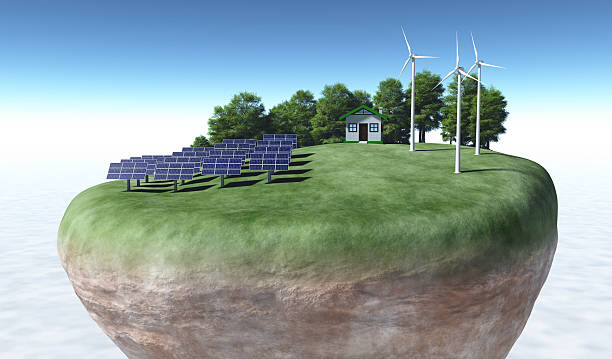
Climate change is a growing concern for many people and homeowners alike. With extreme weather patterns becoming more frequent, it’s more important than ever to ensure that our homes are as climate-proofed as possible. In this blog post, we’ll explore the innovative adaptations of architecture that can help climate-proof your home and protect you from extreme weather events. We’ll also look at how these adaptations can help reduce your carbon footprint and make your home more sustainable.
Understanding Climate Proofing and Its Impacts
Climate proofing is a complex and pressing issue that is affecting our planet in numerous ways. Understanding its impacts is crucial in order to address it effectively. Climate change refers to long-term changes in temperature and weather patterns caused by human activities, particularly the emission of greenhouse gases into the atmosphere.
One of the main impacts of climate change is the increase in extreme weather events. These include hurricanes, droughts, floods, and heatwaves. These events can cause significant damage to homes and infrastructure, putting lives and property at risk. Rising sea levels are also a major concern, as they can lead to coastal erosion and flooding in low-lying areas.
As temperatures rise, habitats are being altered and species are struggling to adapt. This can have cascading effects on the food chain and ecosystem functions, impacting agriculture and natural resources.
Furthermore, climate change has implications for human health. Heatwaves can lead to heat-related illnesses, while increased air pollution can worsen respiratory conditions. Changes in precipitation patterns can also impact water availability, leading to water scarcity and sanitation issues.
It is important to recognize that these impacts are not evenly distributed. Vulnerable communities, including those in low-income areas and developing countries, often bear the brunt of climate change effects due to limited resources and infrastructure.
Understanding the impacts of climate change is crucial in order to take appropriate actions to mitigate and adapt to its effects. By climate-proofing our homes and implementing sustainable practices, we can help reduce our carbon footprint and contribute to a more resilient and sustainable future.

Climate-Proofing Your Home with Architecture
As climate proofing becomes a more pressing concern, it’s important to explore innovative adaptations in architecture that can help climate-proof our homes. Climate-proofing your home with architecture involves implementing design features and building materials that can withstand extreme weather events and reduce your carbon footprint.
One of the key aspects of climate-proofing your home is considering its resilience to extreme weather events. This can be achieved through the use of durable and weather-resistant materials in construction. For example, incorporating reinforced concrete or impact-resistant windows can help protect your home from high winds and flying debris during hurricanes or storms. Additionally, designing roofs with a higher pitch and using materials that can withstand heavy rain can prevent water damage and flooding.
Another aspect of climate-proofing is optimizing energy efficiency. This can be done through the use of passive design strategies, such as orienting your home to maximize natural light and ventilation. This not only reduces the need for artificial lighting and air conditioning but also promotes a healthier indoor environment.
Incorporating renewable energy systems, such as solar panels or geothermal heating, can further reduce your reliance on fossil fuels and decrease your carbon footprint. These energy-efficient designs not only benefit the environment but also lead to cost savings in the long run.

Using Sustainable Materials in Construction and Climate Proofing
Using sustainable materials in construction is an essential aspect of climate proofing your home. Sustainable materials are those that have a minimal impact on the environment throughout their lifecycle, from extraction to disposal.
One popular option for sustainable construction materials is recycled materials. Recycled concrete, for example, can be used as a substitute for traditional concrete, reducing the demand for virgin materials and decreasing carbon emissions associated with the production process. Similarly, recycled timber can be used for framing and decking, saving trees and reducing deforestation.
Another sustainable material to consider is bamboo. It is incredibly strong, making it an excellent choice for construction purposes. Bamboo can be used for flooring, walls, and even structural elements, providing a renewable and eco-friendly alternative to traditional building materials.
Additionally, using locally sourced materials can help minimize the environmental impact of construction. By sourcing materials from nearby suppliers, you can reduce transportation emissions and support the local economy. Local materials often have lower embodied energy, which refers to the energy required to extract, manufacture, transport, and install a material.
Overall, using sustainable materials in construction is an effective way to climate-proof your home. By choosing recycled materials, bamboo, and locally sourced materials, you can reduce your carbon footprint, support the environment, and contribute to a more sustainable future.

The Benefits of Energy-Efficient Designs and Climate Proofing
Energy-efficient designs offer numerous benefits for homeowners and the environment. By incorporating energy-saving features into your home, you can not only reduce your carbon footprint but also enjoy financial savings and improved comfort.
One of the key benefits of energy-efficient designs is lower energy bills. By optimizing insulation, sealing air leaks, and using efficient appliances, you can significantly reduce your energy consumption. This translates into lower monthly utility bills, allowing you to save money over time. Imagine the extra cash you could have each month to invest in other areas of your life!
Another advantage of energy-efficient designs is increased comfort. By properly insulating your home and preventing drafts, you can maintain a more consistent indoor temperature throughout the year. This means no more freezing in the winter or sweltering in the summer. Energy-efficient designs also promote better indoor air quality by reducing the entry of outdoor pollutants and ensuring proper ventilation, which is especially beneficial for individuals with allergies or respiratory conditions.
Furthermore, energy-efficient designs contribute to a healthier environment. By reducing energy consumption, you decrease the demand for fossil fuels, which helps reduce greenhouse gas emissions and mitigate climate change. This, in turn, leads to cleaner air and a more sustainable future for generations to come.
Energy-efficient designs also add value to your home. With an increasing emphasis on sustainability and energy efficiency, potential buyers are often willing to pay a premium for homes that have these features. So, not only will you enjoy the benefits of an energy-efficient home while you live there, but you’ll also reap the rewards if you decide to sell in the future.

Implementing Natural Ventilation and Light
Implementing natural ventilation and light in your home is not only a practical and cost-effective way to climate-proof your living space, but it can also create a more comfortable and healthier environment. Natural ventilation refers to the movement of fresh air through your home without the need for mechanical systems, such as air conditioning. By designing your home with natural ventilation in mind, you can reduce your reliance on artificial cooling methods, saving energy and reducing your carbon footprint.
One way to implement natural ventilation is through the strategic placement of windows and openings in your home. By positioning windows on opposite sides of a room or using windows that can be opened from the top and bottom, you can create cross-ventilation, allowing for a steady flow of fresh air throughout the space. This not only helps to cool the room naturally but also eliminates stagnant air and potential moisture build-up, which can lead to mold and other air quality issues.
In addition to natural ventilation, incorporating ample natural light into your home can have numerous benefits. Natural light not only reduces the need for artificial lighting during the day, but it also has been shown to improve mood, increase productivity, and support overall well-being. When designing your home, consider using skylights, larger windows, and glass doors to maximize the amount of natural light that enters your space.
By implementing natural ventilation and light in your home, you can create a space that is not only climate-proofed but also more comfortable and sustainable. The use of natural airflow and lighting can significantly reduce your energy consumption and reliance on artificial systems, leading to long-term cost savings and a healthier living environment. So, when designing or renovating your home, be sure to prioritize natural ventilation and light to create a space that is truly climate-proofed and conducive to a sustainable lifestyle.

Utilizing Rainwater Harvesting and Greywater Systems
One of the most innovative adaptations of architecture for climate-proofing your home is the use of rainwater harvesting and greywater systems. These systems allow you to collect and reuse water, reducing your reliance on freshwater sources and conserving this precious resource.
Rainwater harvesting involves capturing and storing rainwater that falls on your roof or other surfaces. This water can then be used for a variety of purposes, such as watering your garden, flushing toilets, or even for washing clothes. By collecting rainwater, you not only reduce your reliance on municipal water supplies but also help alleviate strain on these resources, especially during drought conditions.
Greywater systems, on the other hand, involve capturing and treating wastewater from sources such as sinks, showers, and washing machines. This water, which is still relatively clean and free from contaminants, can be treated and reused for non-potable purposes, such as irrigating plants or flushing toilets. By diverting greywater from entering the sewage system, you not only conserve water but also reduce the energy and resources needed to treat and transport wastewater.
Implementing rainwater harvesting and greywater systems in your home can have numerous benefits. Not only do these systems help conserve water, but they also reduce your reliance on municipal infrastructure, saving you money on water bills. Additionally, by reusing water, you decrease the demand for freshwater sources and help protect local ecosystems.
To incorporate these systems into your home, you will need to consider factors such as storage capacity, filtration, and distribution. Professional guidance may be needed to ensure that these systems are installed properly and comply with local regulations.

Incorporating Green Spaces and Urban Agriculture
Incorporating green spaces and urban agriculture into your home is not only a great way to climate-proof your living space but also to promote a more sustainable and vibrant community. Green spaces, such as gardens, parks, and rooftop gardens, provide numerous benefits for both homeowners and the environment.
First and foremost, green spaces can help combat the effects of climate change by reducing the urban heat island effect. The heat island effect occurs when buildings and pavement absorb and re-emit solar radiation, leading to higher temperatures in urban areas compared to surrounding rural areas. By incorporating green spaces into your home, you can create a cooling effect through shade and evapotranspiration, reducing the need for air conditioning and lowering energy consumption.
In addition to climate benefits, green spaces also improve air quality. Plants absorb carbon dioxide and release oxygen through photosynthesis, helping to reduce greenhouse gas emissions and mitigate climate change. They also filter pollutants from the air, improving overall air quality and creating a healthier living environment.
Furthermore, green spaces provide opportunities for urban agriculture, allowing homeowners to grow their own food and contribute to a more sustainable food system. Urban agriculture can take various forms, from container gardening on balconies to community gardens in shared spaces. By growing your own food, you reduce the need for transportation and packaging associated with store-bought produce, leading to a lower carbon footprint and fresher, more nutritious food.
Beyond environmental benefits, green spaces and urban agriculture also contribute to the well-being and quality of life for homeowners. Spending time in nature has been proven to reduce stress, improve mental health, and promote physical activity. It also creates a sense of community and connection, as neighbors can come together to care for shared green spaces and exchange knowledge and resources.
So, whether you have a small balcony or a spacious backyard, consider incorporating green spaces and urban agriculture into your home. Not only will you be climate-proofing your living space, but you’ll also be contributing to a more sustainable, resilient, and enjoyable community.






Just wanna remark on few general things, The website pattern is perfect, the written content is rattling excellent. “Earn but don’t burn.” by B. J. Gupta.
Hi my friend! I wish to say that this post is awesome, great written and come with approximately all important infos. I’d like to see extra posts like this .
Some truly superb information, Gladiola I noticed this. “With silence favor me.” by Horace.
I?¦ll right away clutch your rss feed as I can’t to find your e-mail subscription link or e-newsletter service. Do you have any? Please allow me realize so that I may just subscribe. Thanks.
What Is ProDentim? ProDentim is a teeth health supplement developed to repopulate the mouth with good bacteria and improve overall dental health.
What is ProNerve 6? ProNerve 6 is a doctor-formulated nutritional supplement specifically marketed to individuals struggling with nerve pain.
I have been surfing online greater than three hours these days, yet I by no means discovered any attention-grabbing article like yours. It is pretty value enough for me. In my view, if all web owners and bloggers made excellent content as you probably did, the internet will probably be much more useful than ever before.
Hey There. I discovered your weblog the usage of msn. That is an extremely neatly written article. I will be sure to bookmark it and return to learn more of your helpful info. Thank you for the post. I’ll definitely comeback.
Hi, I think your site might be having browser compatibility issues. When I look at your website in Safari, it looks fine but when opening in Internet Explorer, it has some overlapping. I just wanted to give you a quick heads up! Other then that, fantastic blog!
What Is Exactly Emperor’s Vigor Tonic? Emperor’s Vigor Tonic is a clinically researched natural male health formula that contains a proprietary blend of carefully selected ingredients.
you are really a good webmaster. The website loading speed is amazing. It seems that you’re doing any unique trick. Furthermore, The contents are masterpiece. you have done a magnificent job on this topic!
Lottery Defeater: What Is It? A software tool called Lottery Defeater was created to raise the odds of winning lottery tickets.
As I web site possessor I believe the content matter here is rattling wonderful , appreciate it for your hard work. You should keep it up forever! Best of luck.
Thank you for every other informative site. The place else may I am getting that type of information written in such a perfect manner? I’ve a challenge that I am simply now running on, and I’ve been at the look out for such information.
Greetings! Very helpful advice on this article! It is the little changes that make the biggest changes. Thanks a lot for sharing!
As a Newbie, I am permanently browsing online for articles that can benefit me. Thank you
Whats Going down i’m new to this, I stumbled upon this I have discovered It absolutely helpful and it has helped me out loads. I’m hoping to contribute & aid different customers like its helped me. Good job.